Chrysler 2011 Annual Report Download - page 228
Download and view the complete annual report
Please find page 228 of the 2011 Chrysler annual report below. You can navigate through the pages in the report by either clicking on the pages listed below, or by using the keyword search tool below to find specific information within the annual report.-
 1
1 -
 2
2 -
 3
3 -
 4
4 -
 5
5 -
 6
6 -
 7
7 -
 8
8 -
 9
9 -
 10
10 -
 11
11 -
 12
12 -
 13
13 -
 14
14 -
 15
15 -
 16
16 -
 17
17 -
 18
18 -
 19
19 -
 20
20 -
 21
21 -
 22
22 -
 23
23 -
 24
24 -
 25
25 -
 26
26 -
 27
27 -
 28
28 -
 29
29 -
 30
30 -
 31
31 -
 32
32 -
 33
33 -
 34
34 -
 35
35 -
 36
36 -
 37
37 -
 38
38 -
 39
39 -
 40
40 -
 41
41 -
 42
42 -
 43
43 -
 44
44 -
 45
45 -
 46
46 -
 47
47 -
 48
48 -
 49
49 -
 50
50 -
 51
51 -
 52
52 -
 53
53 -
 54
54 -
 55
55 -
 56
56 -
 57
57 -
 58
58 -
 59
59 -
 60
60 -
 61
61 -
 62
62 -
 63
63 -
 64
64 -
 65
65 -
 66
66 -
 67
67 -
 68
68 -
 69
69 -
 70
70 -
 71
71 -
 72
72 -
 73
73 -
 74
74 -
 75
75 -
 76
76 -
 77
77 -
 78
78 -
 79
79 -
 80
80 -
 81
81 -
 82
82 -
 83
83 -
 84
84 -
 85
85 -
 86
86 -
 87
87 -
 88
88 -
 89
89 -
 90
90 -
 91
91 -
 92
92 -
 93
93 -
 94
94 -
 95
95 -
 96
96 -
 97
97 -
 98
98 -
 99
99 -
 100
100 -
 101
101 -
 102
102 -
 103
103 -
 104
104 -
 105
105 -
 106
106 -
 107
107 -
 108
108 -
 109
109 -
 110
110 -
 111
111 -
 112
112 -
 113
113 -
 114
114 -
 115
115 -
 116
116 -
 117
117 -
 118
118 -
 119
119 -
 120
120 -
 121
121 -
 122
122 -
 123
123 -
 124
124 -
 125
125 -
 126
126 -
 127
127 -
 128
128 -
 129
129 -
 130
130 -
 131
131 -
 132
132 -
 133
133 -
 134
134 -
 135
135 -
 136
136 -
 137
137 -
 138
138 -
 139
139 -
 140
140 -
 141
141 -
 142
142 -
 143
143 -
 144
144 -
 145
145 -
 146
146 -
 147
147 -
 148
148 -
 149
149 -
 150
150 -
 151
151 -
 152
152 -
 153
153 -
 154
154 -
 155
155 -
 156
156 -
 157
157 -
 158
158 -
 159
159 -
 160
160 -
 161
161 -
 162
162 -
 163
163 -
 164
164 -
 165
165 -
 166
166 -
 167
167 -
 168
168 -
 169
169 -
 170
170 -
 171
171 -
 172
172 -
 173
173 -
 174
174 -
 175
175 -
 176
176 -
 177
177 -
 178
178 -
 179
179 -
 180
180 -
 181
181 -
 182
182 -
 183
183 -
 184
184 -
 185
185 -
 186
186 -
 187
187 -
 188
188 -
 189
189 -
 190
190 -
 191
191 -
 192
192 -
 193
193 -
 194
194 -
 195
195 -
 196
196 -
 197
197 -
 198
198 -
 199
199 -
 200
200 -
 201
201 -
 202
202 -
 203
203 -
 204
204 -
 205
205 -
 206
206 -
 207
207 -
 208
208 -
 209
209 -
 210
210 -
 211
211 -
 212
212 -
 213
213 -
 214
214 -
 215
215 -
 216
216 -
 217
217 -
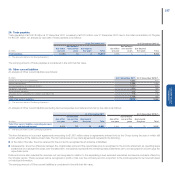 218
218 -
 219
219 -
 220
220 -
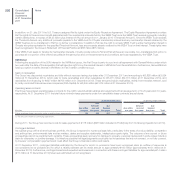 221
221 -
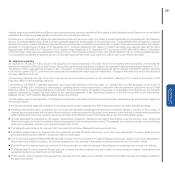 222
222 -
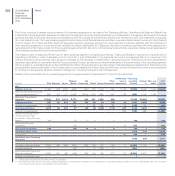 223
223 -
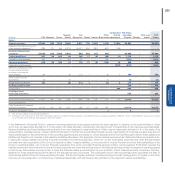 224
224 -
 225
225 -
 226
226 -
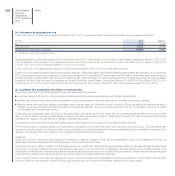 227
227 -
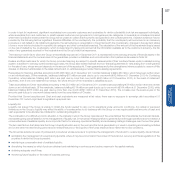 228
228 -
 229
229 -
 230
230 -
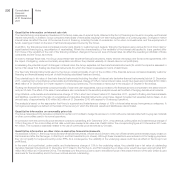 231
231 -
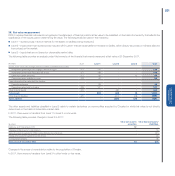 232
232 -
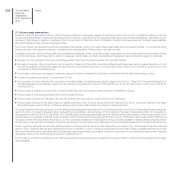 233
233 -
 234
234 -
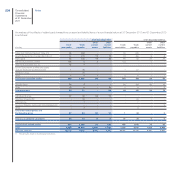 235
235 -
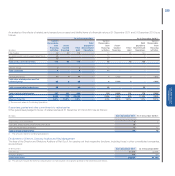 236
236 -
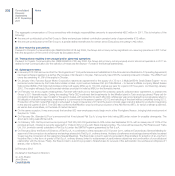 237
237 -
 238
238 -
 239
239 -
 240
240 -
 241
241 -
 242
242 -
 243
243 -
 244
244 -
 245
245 -
 246
246 -
 247
247 -
 248
248 -
 249
249 -
 250
250 -
 251
251 -
 252
252 -
 253
253 -
 254
254 -
 255
255 -
 256
256 -
 257
257 -
 258
258 -
 259
259 -
 260
260 -
 261
261 -
 262
262 -
 263
263 -
 264
264 -
 265
265 -
 266
266 -
 267
267 -
 268
268 -
 269
269 -
 270
270 -
 271
271 -
 272
272 -
 273
273 -
 274
274 -
 275
275 -
 276
276 -
 277
277 -
 278
278 -
 279
279 -
 280
280 -
 281
281 -
 282
282 -
 283
283 -
 284
284 -
 285
285 -
 286
286 -
 287
287 -
 288
288 -
 289
289 -
 290
290 -
 291
291 -
 292
292 -
 293
293 -
 294
294 -
 295
295 -
 296
296 -
 297
297 -
 298
298 -
 299
299 -
 300
300 -
 301
301 -
 302
302 -
 303
303 -
 304
304 -
 305
305 -
 306
306 -
 307
307 -
 308
308 -
 309
309 -
 310
310 -
 311
311 -
 312
312 -
 313
313 -
 314
314 -
 315
315 -
 316
316 -
 317
317 -
 318
318 -
 319
319 -
 320
320 -
 321
321 -
 322
322 -
 323
323 -
 324
324 -
 325
325 -
 326
326 -
 327
327 -
 328
328 -
 329
329 -
 330
330 -
 331
331 -
 332
332 -
 333
333 -
 334
334 -
 335
335 -
 336
336 -
 337
337 -
 338
338 -
 339
339 -
 340
340 -
 341
341 -
 342
342 -
 343
343 -
 344
344 -
 345
345 -
 346
346 -
 347
347 -
 348
348 -
 349
349 -
 350
350 -
 351
351 -
 352
352 -
 353
353 -
 354
354 -
 355
355 -
 356
356 -
 357
357 -
 358
358 -
 359
359 -
 360
360 -
 361
361 -
 362
362 -
 363
363 -
 364
364 -
 365
365 -
 366
366 -
 367
367 -
 368
368 -
 369
369 -
 370
370 -
 371
371 -
 372
372 -
 373
373 -
 374
374 -
 375
375 -
 376
376 -
 377
377 -
 378
378 -
 379
379 -
 380
380 -
 381
381 -
 382
382 -
 383
383 -
 384
384 -
 385
385 -
 386
386 -
 387
387 -
 388
388 -
 389
389 -
 390
390 -
 391
391 -
 392
392 -
 393
393 -
 394
394 -
 395
395 -
 396
396 -
 397
397 -
 398
398 -
 399
399 -
 400
400 -
 401
401 -
 402
402
 |
 |

227
Consolidated
Financial Statements
at 31 December 2011
In order to test for impairment, significant receivables from corporate customers and receivables for which collectability is at risk are assessed individually,
while receivables from end customers or small business customers are grouped into homogeneous risk categories. A receivable is considered impaired
when there is objective evidence that the Group will be unable to collect all amounts the due specified in the contractual terms. Objective evidence may be
provided by the following factors: significant financial difficulties of the counterparty, the probability that the counterparty will be involved in an insolvency
procedure or will default on its instalment payments, the restructuring or renegotiation of open items with the counterparty, changes in the payment status
of one or more debtors included in a specific risk category and other contractual breaches. The calculation of the amount of the impairment loss is based
on the risk of default by the counterparty, which is determined by taking into account all the information available as to the customer’s solvency, the fair
value of any guarantees received for the receivable and the Group’s historical experience.
The maximum credit risk to which the Group is theoretically exposed at 31 December 2011 is represented by the carrying amounts of financial assets in the
financial statements and the nominal value of the guarantees provided on liabilities and commitments to third parties as discussed in Note 32.
Dealers and final customers for which the Group provides financing are subject to specific assessments of their creditworthiness under a detailed scoring
system; in addition to carrying out this screening process, the Group also obtains financial and non-financial guarantees for risks arising from credit granted
for the sale of cars, whose amount depends on the amount of the assets sold. These guarantees are further strengthened where possible by reserve of title
clauses on financed vehicle sales to the sales network and on vehicles assigned under finance leasing agreements.
Receivables for financing activities amounting to €3.968 million at 31 December 2011 contain balances totalling €5 million, which have been written down
on an individual basis. Of the remainder, balances totalling €70 million are past due by up to one month (€42 million at 31 December 2010 for Continuing
Operation), while balances totalling €62 million are past due by more than one month (€92 million at 31 December 2010). In the event of instalment
payments, even if only one instalment is overdue, the whole amount of the receivable is classified as such.
Trade receivables and Other receivables amounting to €4,335 million at 31 December 2011 contain balances totalling €78 million which have been written
down on an individual basis. Of the remainder, balances totalling €314 million are past due by up to one month (€164 million at 31 December 2010), while
balances totalling €313 million are past due by more than one month (€341 million at 31 December 2010). The increase over the previous year in the
amounts past due up to one month arises mainly from the consolidation of Chrysler.
Provided that Current securities and Cash and cash equivalents are measured at fair value, there was no exposure to sovereign debt securities at 31
December 2011 which might lead to significant repayment risk.
Liquidity risk
Liquidity risk arises if the Group is unable to obtain the funds needed to carry out its operations under economic conditions. Any actual or perceived
limitations on the Group’s liquidity may affect the ability of counterparties to do business with the Group or may require additional amounts of cash and
cash equivalents to be allocated as collateral for outstanding obligations.
The continuation of a difficult economic situation in the markets in which the Group operates and the uncertainties that characterise the financial markets,
necessitate giving special attention to the management of liquidity risk. In that sense measures taken to generate funds through operations and to maintain a
conservative level of available liquidity are an important factor for ensuring operational flexibility and addressing strategic challenges over the next few years.
The two main factors that determine the Group’s liquidity situation are on the one hand the funds generated by or used in operating and investing activities
and on the other the debt lending period and its renewal features or the liquidity of the funds employed and market terms and conditions.
The Group has adopted a series of policies and procedures whose purpose is to optimise the management of funds and to reduce liquidity risk as follows:
centralising the management of receipts and payments, where it may be economical in the context of the local civil, currency and fiscal regulations of the
countries in which the Group is present;
maintaining a conservative level of available liquidity;
diversifying the means by which funds are obtained and maintaining a continuous and active presence in the capital markets;
obtaining adequate credit lines;
monitoring future liquidity on the basis of business planning.
